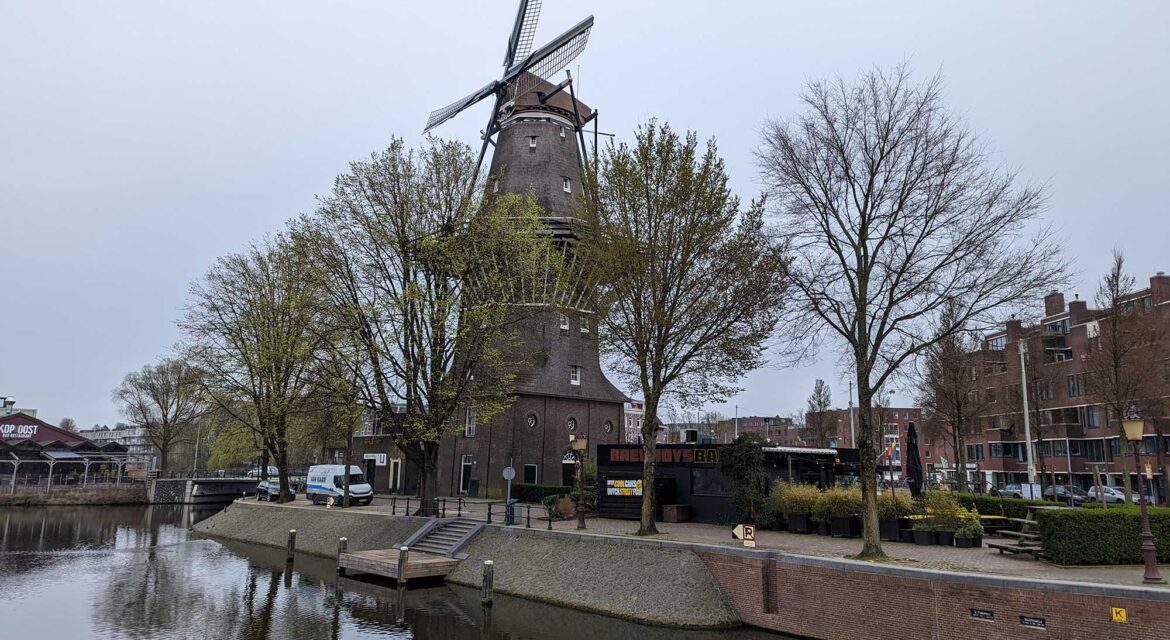 Recognized as the tallest wooden mill in the Netherlands at 26.6 meters high, Windmill De Gooyer dominates the landscape in Amsterdam Oost. The size and history of this landmark showcase the potential it has to become an essential connection to the past that residents and visitors can engage with on multiple levels. However, that potential is only being realized on a very basic level.
Recognized as the tallest wooden mill in the Netherlands at 26.6 meters high, Windmill De Gooyer dominates the landscape in Amsterdam Oost. The size and history of this landmark showcase the potential it has to become an essential connection to the past that residents and visitors can engage with on multiple levels. However, that potential is only being realized on a very basic level.
The history of Windmill De Gooyer stretches back for hundreds of years, as the original mill was constructed in the 16th century. In 1814 the mill itself was moved to the current location on Funenkade and placed on top of a stone base of a watermill that had been demolished. It was the last of the many corn mills that had been built on the 17th-century wall bastions of Amsterdam.
Purchased by the city of Amsterdam in 1928, Windmill De Gooyer functioned as a corn mill through the first part of the 1900s and all through World War II. After ceasing production, the mill became dilapidated and has been closed off to visitors for many decades. That has not stopped it from becoming one of the most notable attractions in the city of Amsterdam.

 Tourists flock to the location for pictures and the windmill itself is featured on various items for sales. It has even become part of the branding of nearby establishments and is a notable elements of maps and guides to the city.
Tourists flock to the location for pictures and the windmill itself is featured on various items for sales. It has even become part of the branding of nearby establishments and is a notable elements of maps and guides to the city.
While the Brouwerij ‘t IJ brewery is located directly next to Windmill De Gooyer, the two are not associated with one another. The brewery sells its various types of beers on location but the connection to windmills and the history of Windmill De Gooyer is tenuous. While visitors can grab a drink and admire the biggest wooden windmill in the Netherlands from the location, the engagement audiences can have with it is limited, even though it is still listed as a top attraction for Amsterdam.
Since the windmill itself cannot be visited, nearby businesses are limited in terms of how they can enable engagement with both residents and visitors. This limitation highlights the potential that Windmill De Gooyer has to become the most popular attraction in the city.

